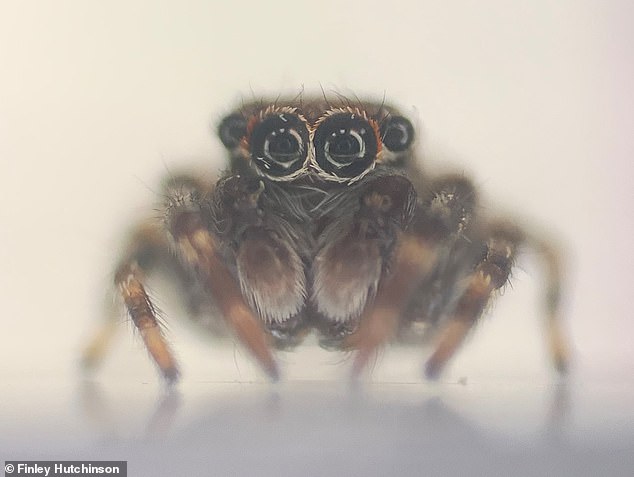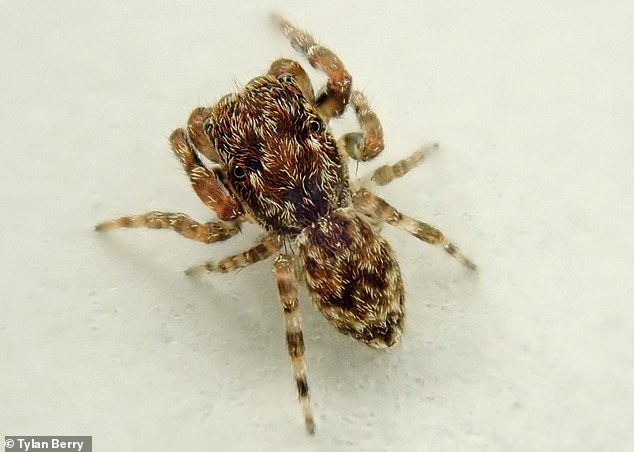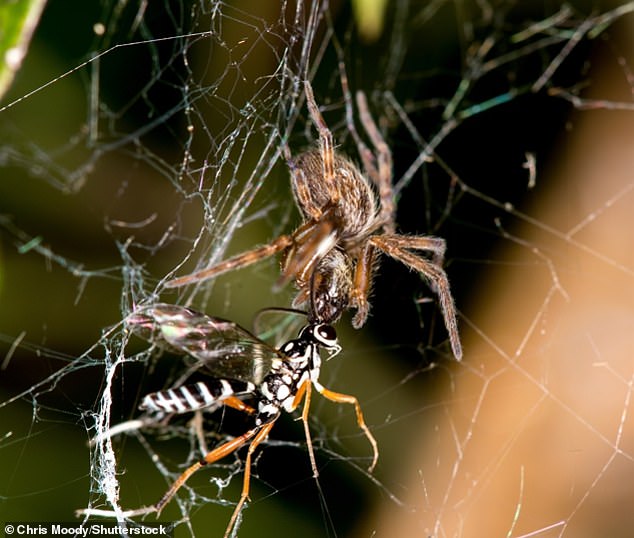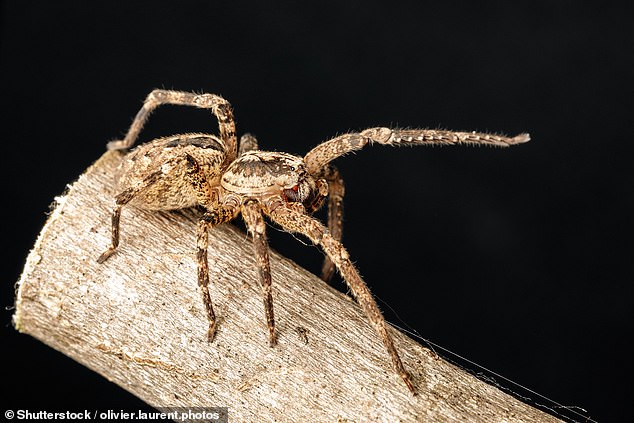Britain should brace for an influx of exotic SPIDERS, scientists say, as a new species of arachnid is found in Cornwall
If you have arachnophobia, the effects of climate change could be even worse for you.
According to experts, warmer temperatures in Britain provide perfect living conditions for spiders arriving from abroad.
Many of these plants hitchhiked aboard ships from remote areas such as the Caribbean and Australia, probably on imported plants.
And as conditions continue to warm, we can expect an influx of more spider species in the coming years – especially in the southernmost counties such as Devon and Cornwall.
It follows the discovery of a new arachnid species found on a university campus in Cornwall last year that can suddenly jump.
Britain should brace for an influx of exotic spiders, scientists say, as a new species of arachnid called Anasaitis milesae has been found in Cornwall. In the photo a female Anasaitis milesae

No record of Anasaitis milesae has been found anywhere in the world – but it is related to other species known in the Caribbean, so probably arrived in Britain on imported plants
Dr. Helen Smith, conservation officer at the British Arachnological Society, said “there is very little we can do” to stop the arrival of spiders.
“As a result of climate warming, different species may gain traction in certain areas and ecosystems may change quite rapidly,” she said. the guard.
‘As new, exotic species spread, especially outside urban areas, the likelihood that they will impact less common native species increases.’
According to Dr Smith, these invasive spider species compete with native British spiders for prey and living space.
About 15 percent of our native spider species are already threatened with extinction due to habitat loss and climate change.
So the arrival of these other species better adapted to warmer temperatures could accelerate the demise of our British arachnids.
One of these newcomers is Anasaitis milesae, a type of jumping spider. This means that it can make spectacular jumps when pouncing on its prey or escaping danger.

British Arachnological Society expert Tylan Berry discovered it on the University of Exeter’s Cornwall campus in Penryn. In the photo a male Anasaitis milesae
Anasaitis milesae is believed to have originated in the Caribbean, but the species is being described as a new species after being spotted in Cornwall last year.
British Arachnological Society expert Tylan Berry discovered it on the University of Exeter’s Cornwall campus in Penryn.
He said it is ‘new to Cornwall, new to Britain and new to science’ and probably came to British shores ‘via imported plants’.
Anasaitis milesae is now ‘widespread’ in a garden or park setting and ‘very easy to find’ by knocking back shrubs and lower tree branches.
The species has just been described in a new article by Dr. Dmitri Logunov, an arachnologist and curator at the Manchester Museum.
Another spider species from Australia and New Zealand – Badumna longinqua, also known as the gray house spider – is also spreading throughout Britain, where down under has been known for decades.
It has been spotted in Wales, Nottinghamshire, Tyne and Wear, Cornwall and Devon, where Mr Berry says it is ‘incredibly well established in Plymouth’.
“It is spread over an area of 6 km2 (2.3 sq mi) and is the dominant species in some places,” he said.

Badumna longinqua, also known as the gray house spider, is also spreading throughout Britain. The species is pictured here devouring a wasp in Rotorua, New Zealand

Another newcomer is the false wolf spider (Zoropsis spinimana), a Mediterranean species that ‘thrives’ in homes in London
The first UK sightings of the gray house spider in 2021 occurred near ports or garden centres, suggesting it was also landing on imported plants.
Another newcomer is the false wolf spider (Zoropsis spinimana), a Mediterranean species that ‘thrives’ in homes in London.
According to the British Arachnological Society, it can penetrate human skin with its chelicerae and cause a painful bite, although such bites are ‘unlikely’.
But the ‘most dangerous’ spider in Britain is usually the noble false widow (Steatoda nobilis), which causes pain and swelling when it bites people.
The noble false widow was first recorded in Britain in the 1870s and was probably a stowaway on cargo ships from the birthplace of Madeira and the Canary Islands.
